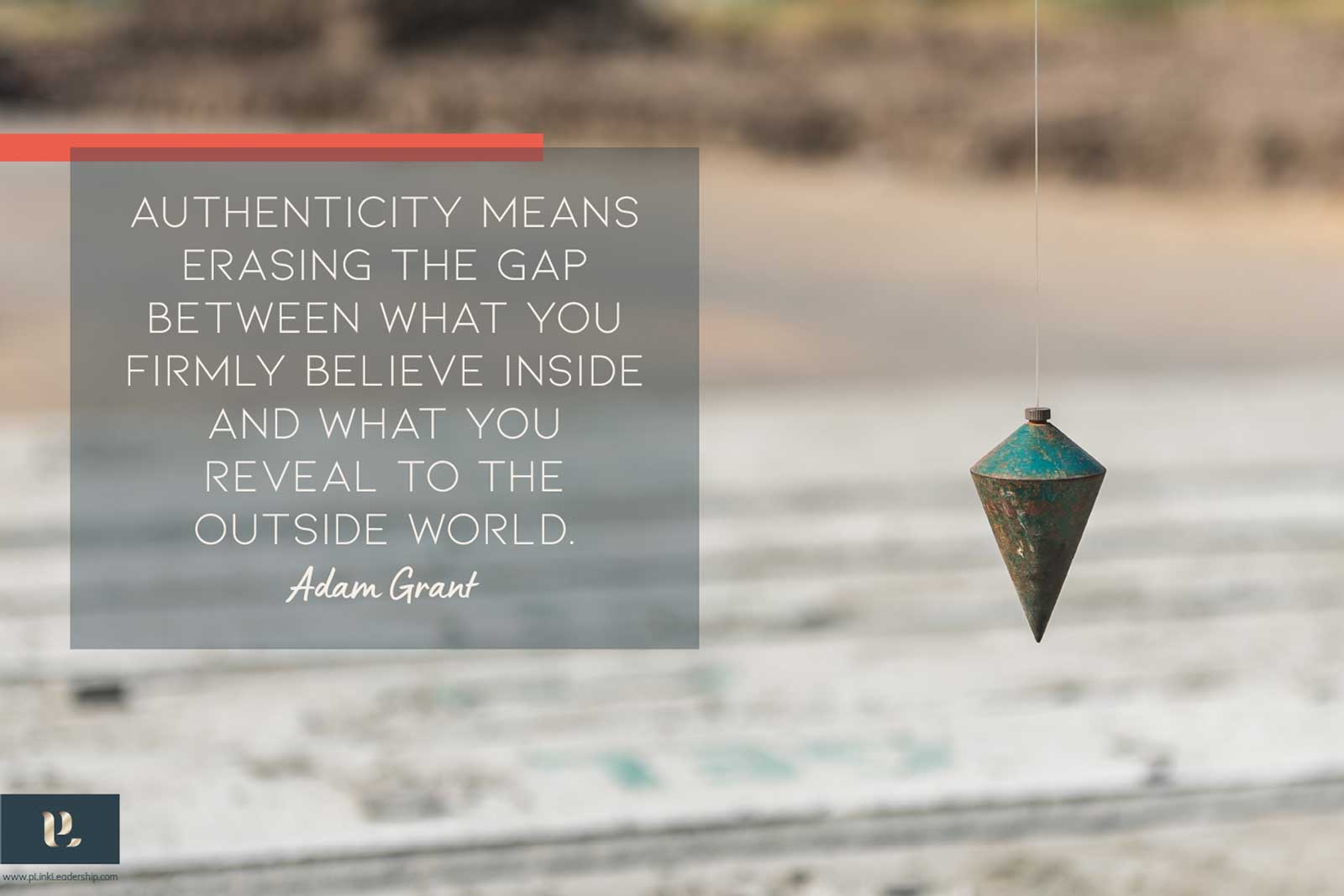“I’m sorry, but I don’t get all the leadership jargon,” he said.
We were knee-deep in a one-to-one 360 debrief, where this leader (we’ll call him Evan) was receiving collated feedback from his direct reports, peers, and boss. Receiving feedback is essential to leadership development, and unpacking and integrating it can be a tender experience.
“What is seeming like jargon to you?” I asked.
Evan was struggling to integrate the feedback around his perceived “lack of authenticity,” and the thought of being seen as an “inauthentic” made him feel terrible. He was hurt and disappointed.
The thing about authenticity is that it’s not a one-switch decision—it’s a set of choices we make every day to align with our values, to understand, and to be curious about our beliefs and aware of our actions.
Understanding what gets in the way of authenticity can open the door and bring awareness to making the daily choices that help in developing and grounding ourselves in authenticity. More importantly, living and leading with authenticity allows us to genuinely connect to our colleagues, to build trust, to honor who we are, and to leverage our unique contribution.
Over his lifetime, when Evan felt unsafe, he protected himself by withdrawing, criticizing others, or projecting moral and intellectual superiority. In action, this looked like being silent in meetings and being cynical and critical with his direct reports. These actions significantly impacted the environment and reduced innovative contributions, as staff tiptoed on eggshells. Evan truly cared about his team and colleagues, and these actions violated his own values of teamwork and kindness.
“Authenticity means erasing the gap between what you firmly believe inside and what you reveal to the outside world.”
Adam Grant
As in this quote by Adam Grant, authenticity relies on your inner game (thoughts, beliefs, emotions, narratives) matching your outer game (behaviors and actions). As a leader, your colleagues look to experience the real you: they can sense when there is incongruence. You can’t fake authenticity. People want to work with honest and trustworthy leaders who operate in alignment with their values.
When Evan withdrew, his team could not feel the “real” Evan.
Being authentic means having the courage to allow ourselves to be seen. That can feel vulnerable – as it involves leaning into uncertainty, risk, and emotional exposure, as defined by Brené Brown (Dare to Lead).
If you are interested in how to build your authenticity muscle, check out the questions below:
Inner Game:
- How familiar are you with your values? (You can take this free, evidence-based assessment if you’d like to learn more about your values in action: https://www.viacharacter.org).
- How are you operationalizing your values, i.e., how do they come alive in practice?
- How do you share your values?
- Is there a gap between your inner game (your thoughts, beliefs, assumptions, narratives, emotions) and your outer game (what everyone else sees)? If so, what is causing the gap?
Outer Game:
- What does showing up as your authentic self look like?
- What would you be thinking, feeling, and behaving like?
- What gets in the way of you showing up authentically? What do you notice about when or with whom this happens?
Authenticity is more than leadership jargon. It’s an important creative leadership competency that leads to increased effectiveness and connectedness. Authenticity comes from centering ourselves in our values, walking in integrity, and consistently making choices that reflect who we are and who we are becoming as leaders. It’s a practice of building our self-awareness and of allowing ourselves to be truly seen. This takes ordinary, everyday courage.



